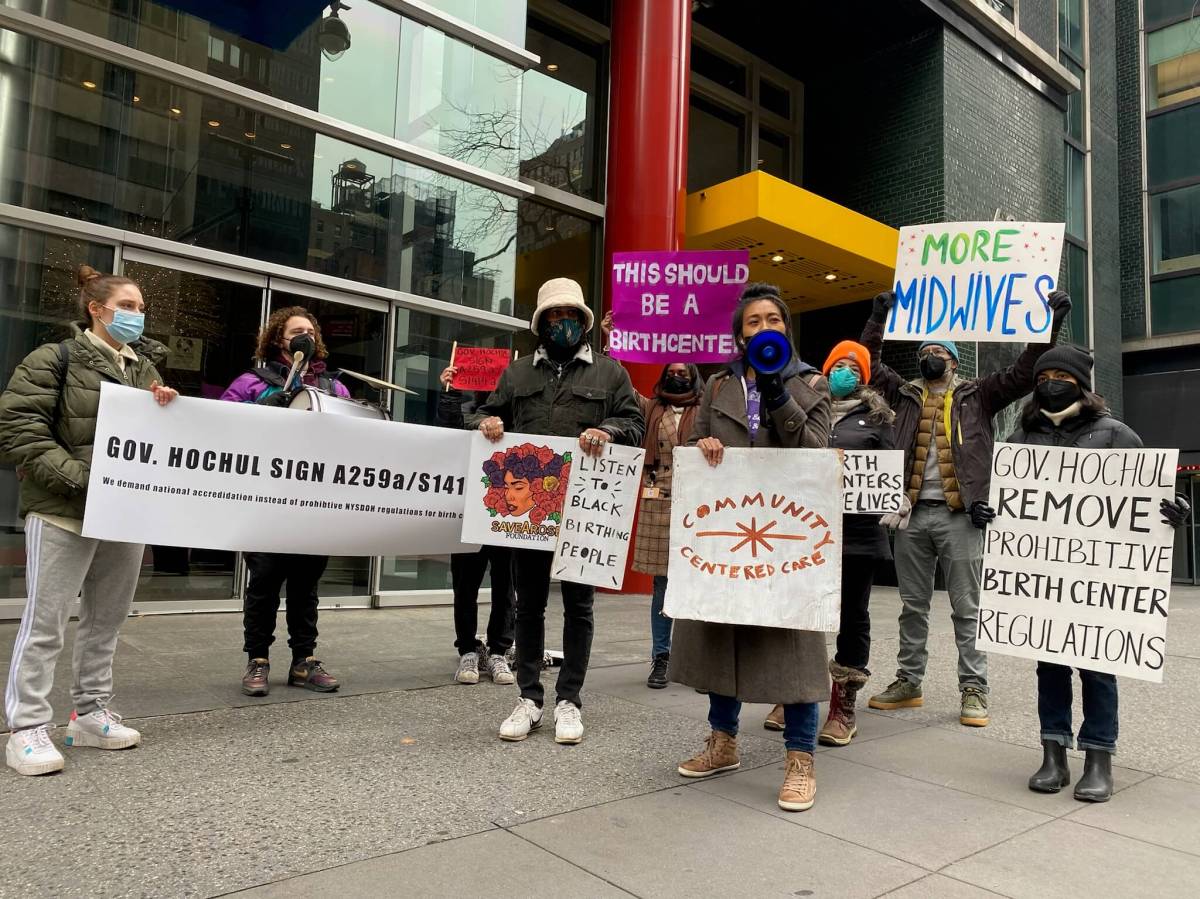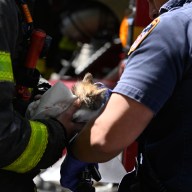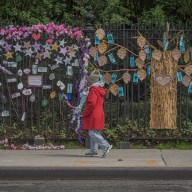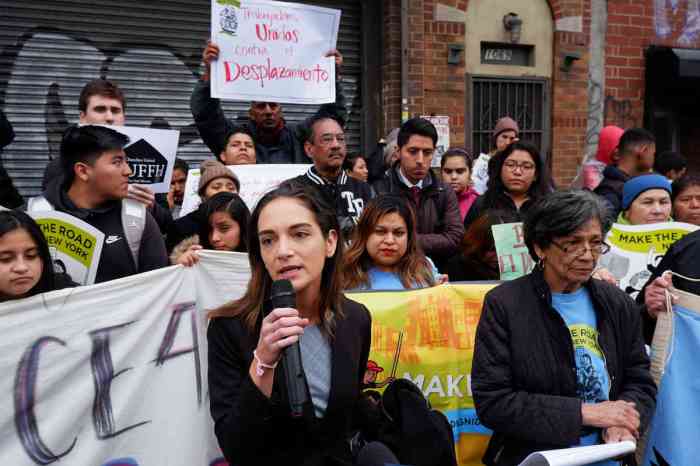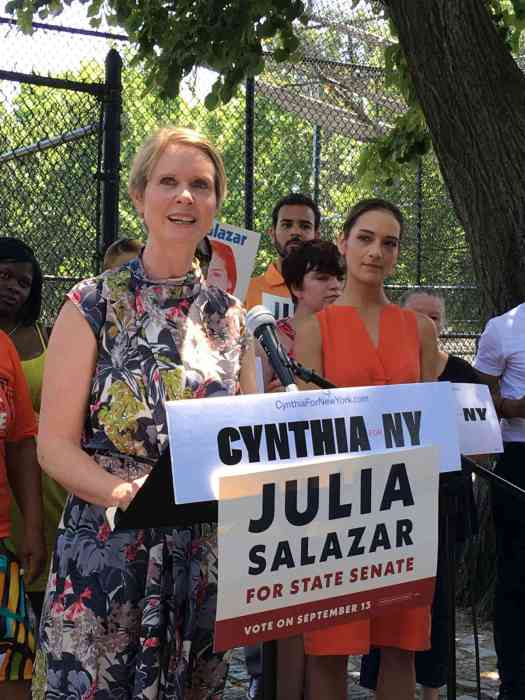At the last possible moment on New Year’s Eve, Gov. Kathy Hochul signed a bill restructuring the way midwife-led birth centers will be licensed and operated in New York State, but midwives are hesitant to celebrate the new law.
For weeks leading up to the eleventh-hour approval, midwives and activists pushed her to sign the bill before it expired on her desk as the new year started. The legislation — an amendment to state public health law sponsored by Assemblymember Richard Gottfried and state Sen. Gustavo Rivera — was meant to completely overhaul the licensing procedures and regulations for midwife-led freestanding birth centers.
As they stand, advocates say those regulations, written by the state’s Department of Health, are too restrictive and too expensive. No midwife-led birth centers have opened in New York since they were effectively legalized in 2016. Under the originally-proposed bill, the state would have adopted the accreditation standards of the Commission for the Accreditation of Birth Centers, which were developed by and for midwives, and have been proven, activists say, to be safe and effective.
The legislation passed easily through both the state senate and the Assembly, but hit a snag when it reached the executive’s office.
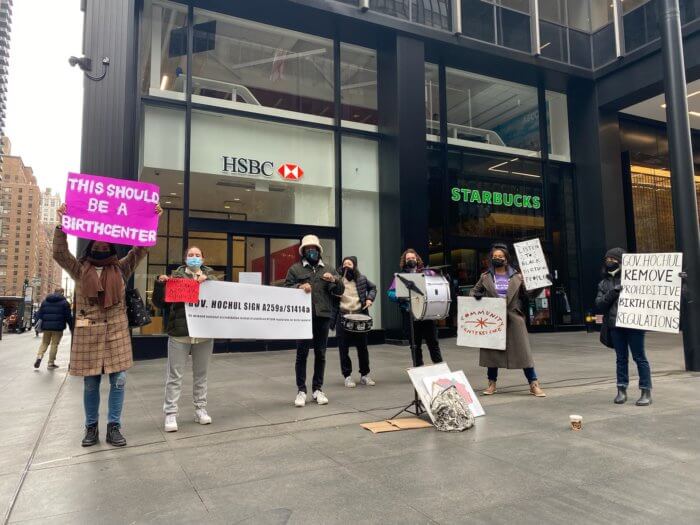
A few weeks before the new year, Hochul’s office sent out the bill with their first set of proposed amendments, and the changes horrified Myla Flores, a Bronx-based birth worker and doula who has been working to pass the bill since its inception.
“Like, several paragraphs they entered into the bill was stuff that essentially canceled out the purpose of the bill,” she said. “That was why we rallied up to say, ‘Sign it as it is, sign it as it is.’ It wasn’t signed as it [was], but the changes are somewhere in the middle of what they were proposing and what exists now.”
Negotiations started at about 3:30 pm on Dec. 30, she said, and continued until 11 pm. Flores and the coalition of midwives and birth workers lobbying for the bill met with each other, with Rivera’s staff, and with other stakeholders in turn throughout the day as they worked through their concerns. The result was a set of five modified amendments, not as restrictive as what Hochul’s office had originally proposed but not granting as much freedom as Flores and her colleagues had hoped.
Changes to the bill
The first amendment states that, rather than adopting the CABC’s tenants outright, an applicant must prove that they meet their requirements, and show their ability and intent to obtain that accreditation. In addition, though, they must file an application with, and be approved by, the state’s Public Health and Health Planning Commission.
“They are appointed by the governor, so we don’t even have a vote in who they are, and they have a high interest, often, in the profits of their organizations,” Flores said, of the people who make up that commission.”There’s a history here, where we know that midwifery gets pushed to the sidelines all the time. So what is the exception now that is going to become something that they prioritize?”
The council’s current members include representatives from Northwell Health, NYU Langone, and Mount Sinai. While state law dictates that a number of members of the council be representatives of hospitals, nursing homes, labor organizations, and more, none are required to be midwives or birth workers.
Hochul’s second added amendment says that applicants have to provide evidence of their capability to fund acquisition, renovation, and construction costs — at the time of submission, and that the buildings planned to be used as birth centers must meet certain state safety standards — an ongoing issue for birth centers now, because most of those standards were developed for much larger, wealthier hospitals.
“The interpretation of this overall amendment is that the PHHPC application is basically still a barrier to lower-resourced birth centers, and if a building is already spotted, there might be some technicalities or restrictions against using that building for its full purpose,” Flores said. “People who don’t already own property or have the resources to complete this expensive, lengthy application process will have a harder time than those that do.”
Among those without those resources is Trinisha Williams, owner of Haven Midwifery. Just before the negotiations began, Williams told Brooklyn Paper about the struggles she’s faced trying to open a birth center in Brooklyn, which are largely financial. An address is needed to apply for accreditation with the state, but renting a commercial space large enough for a birth center for months while working through the application process, all while leaving the space empty and out of operation, is untenable.
“Until I see action, I can’t say anything is different from them signing or not signing off,” she said. “Until I see actionable items based on what little bit we did get, I can’t say that it’s been beneficial, I just can’t.”
The third and fourth amendments are a little more hopeful, Flores said. The third requires PHHPC take up completed birth center applications at their next scheduled meeting, rather than letting them languish for months as has often happened in the past, she said, and the fourth states that where New York and the CABC’s regulations differ, government officials must work with midwives to “harmonize” them.
Thinking optimistically, Flores said, the fourth amendment will let midwives show state authorities why the CABC’s rules are best and should be implemented. On the flip side, she’s not sure just how convincing they can be — especially without knowing the exact makeup of the panel of midwives and hospital representatives, and given the health department’s past of “not acting in good faith,” she said.
All new regulations must be written by the health department in 180 days, as per the fifth and final amendment — another relief, as after the first bill legalizing birth centers was passed in 2016, three years passed before the first set of rules was set in stone.
New York City birth centers still face challenges
It’s impossible to pass judgement on the amendments without seeing those regulations, Williams said, but from where she stands, nothing has changed for her. She is still planning on finding and somehow purchasing a suitable building for a birth center in Brooklyn after years of being forced to give up leases while trying to navigate the application process, but she’s not feeling optimistic about her prospects.
“I do have a colleague, Maura, who’s up in Buffalo, who has an application in,” she said. “It’s not like I think it’s going to be different for me because we [applied.] I’m hopeful that for Maura, she’s going to be able to move her facility forward.”
Flores, who is planning to purchase land to open a new birth center in the northwest Bronx when the time is right, said she does think her counterparts upstate, with more options for cheaper sites, will have better luck than midwives in the city.
While more options for maternal care and childbirth are needed statewide — New York is ranked 30th in the nation for maternal mortality and Black women are about three times as likely to suffer and die from from childbirth-related complications as white women. A 2019 report by the state’s task force on racial disparity in maternal mortality said it is important to “recognize the role of racism in maternal physical and mental health,” and that structural and individual racism can compromise the healthcare Black people receive over time, contributing to higher rates of complications and death.
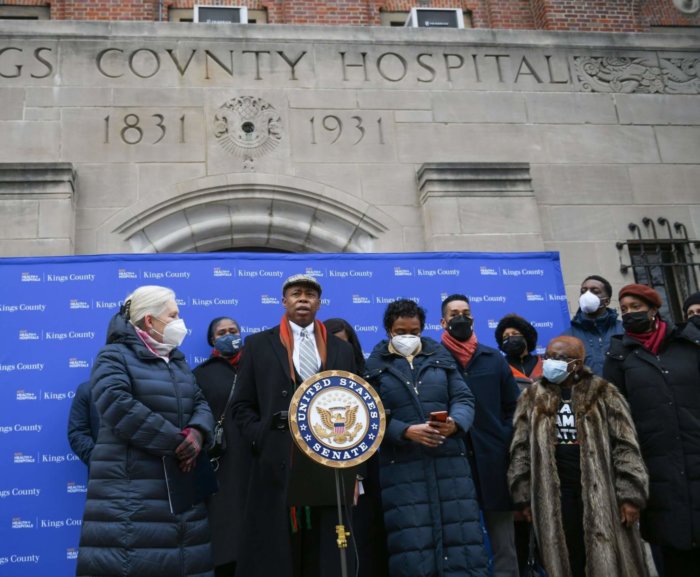
In 2017, the city tracked 58 “pregnancy-associated” deaths, meaning the person died from any cause during pregnancy or within one year after birth, including 21 “pregnancy-related” deaths, meaning the death was directly caused by a pregnancy complication. Black women comprised the highest number of deaths in both categories.
The city also keeps track of “severe maternal morbidity,” life-threatening complications associated with pregnancy and childbirth. According to the most recent data, from 2014, the citywide average of these complications was 277.8 per 10,000 deliveries. Brooklyn had the highest rates of complications per neighborhood, with East New York and East Flatbush leading the pack with complication rates of over 500 per 10,000 births.
In the qualitative report accompanying that data, women recounted feeling ignored and ill-informed by their doctors and nurses while giving birth in hospitals, often being treated by more than one caregiver during their stay and feeling overwhelmed by their experiences during and after birth. Midwives say birth centers, accompanied by regular care by midwives and doulas throughout pregnancy, can reduce those feelings, giving women more education, choice, and comfort during pregnancy and birth.
“The Department of Health recognizes the problem, I do like some of their approaches, but one of their approaches, of course, is to use alternative healthcare providers like doulas, and educate our obstetricians,” Williams said. “While we do see the value in that, we don’t think that’s the only way to go about this. We need more maternity options for all pregnant people.”
In her efforts to open a birth center in the Bronx, Flores has partnered with Bruce McIntyre, whose partner, Amber Rose Isaac, died in childbirth in 2020 after receiving only virtual care as the pandemic gripped New York City. The severe health issues that ultimately led to her death were only discovered once the couple had turned to a Brooklyn-based doula in seek of alternative care, McIntyre said at the time, and she passed during an emergency cesarean section at Montefiore Medical Center in the Bronx.
Williams is optimistic about the political power behind the movement. Rivera and Gottfried have both been staunch supporters and don’t seem willing to back down, and Flores, who works in Rivera’s district, is looking forward to continuing to work alongside he and his team. Brooklyn’s state Sen. Julia Salazar cosponsored the bill in the senate, and has been “very supportive” of the ongoing fight, Williams said. Before the DOH reveals their settled-upon regulations, she doesn’t have much to ask for, but knows she can turn to Salazar’s office when the need arises.
This week, newly-elected Mayor Eric Adams and Brooklyn Borough President Antonio Reynoso joined Senator Kirsten Gillibrand outside the Kings County Hospital Center to call for funding and support for maternal health measures in New York and nationwide.
More work to come to make birth safer
Of course, there is more to do outside of the newly-approved bill. Flores had hoped, during negotiations, to win approval for temporary licenses, so birth centers could serve families using Medicaid benefits while the state continues to hash out their new rules. New York State also continues to prohibit Certified Professional Midwives from practicing, a loss for facilities and their patients, Flores said, as many are people of color who speak multiple languages and are prohibited from working in their own communities.
“We’re just stepping back, breathing, because we know there’s nothing for us to do right now,” Williams said. “We don’t know what [DOH] is going to do on their side to meet what we asked for in terms of our bargaining.”
The state has 180 days, about five months, to work on and publicize their regulations. Until then, Williams, Flores, and her colleagues will wait to see what their next fight is.
“We chose to give care to people who are disenfranchised, so the fight is always going to be there,” Williams said. “So, the fight is always going to be there. For me, I don’t see when it is ever going to stop.”
Correction 1/19/21: An earlier version of this story characterized Myla Flores as a midwife — Flores is a doula and birthworker, not a certified midwife.


